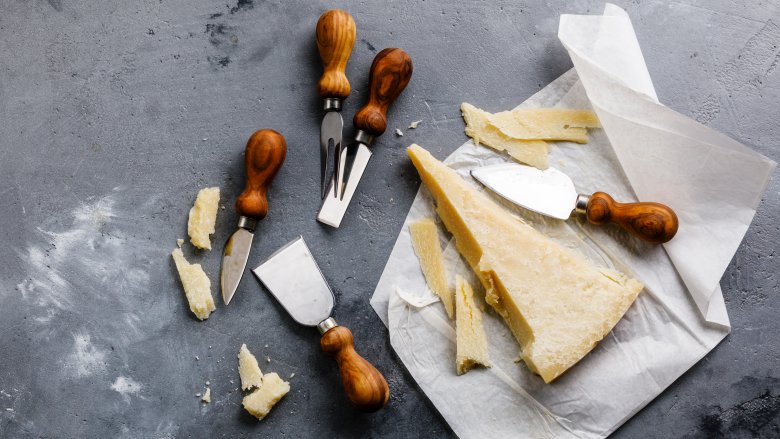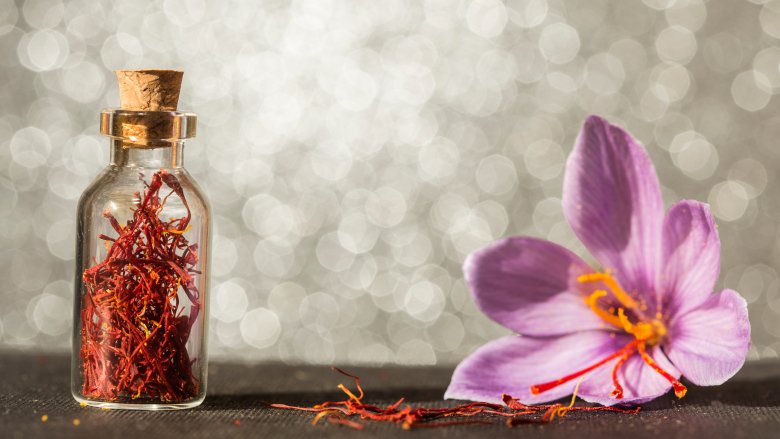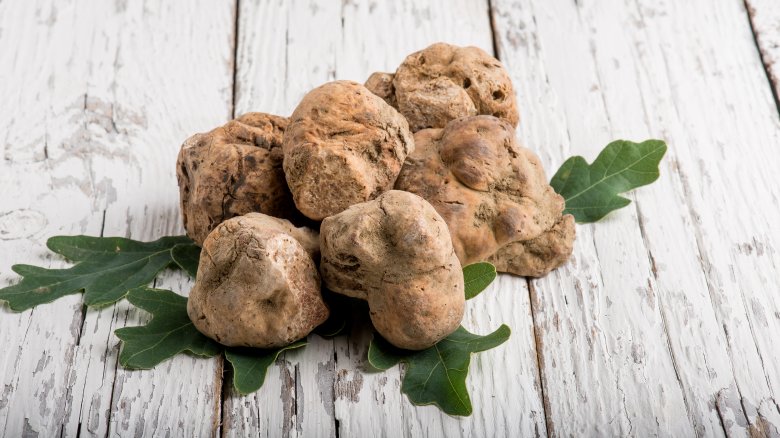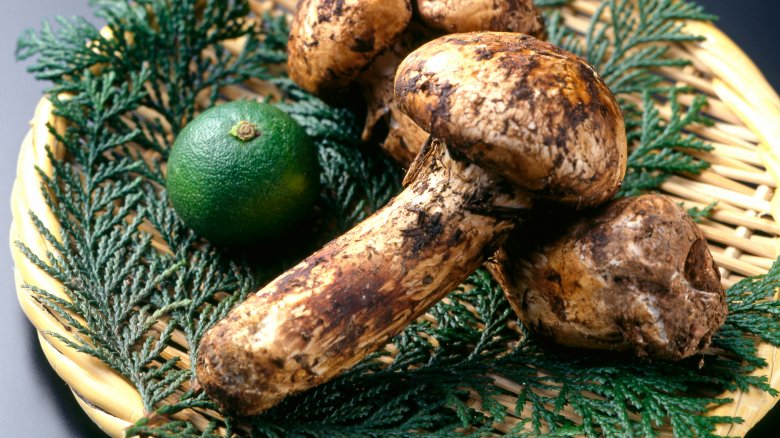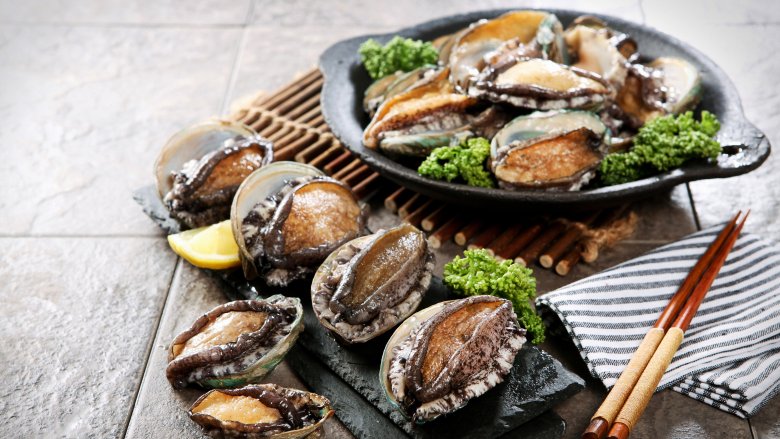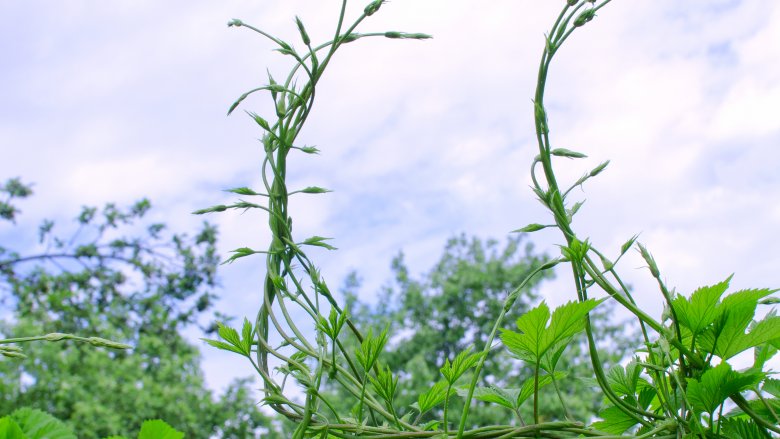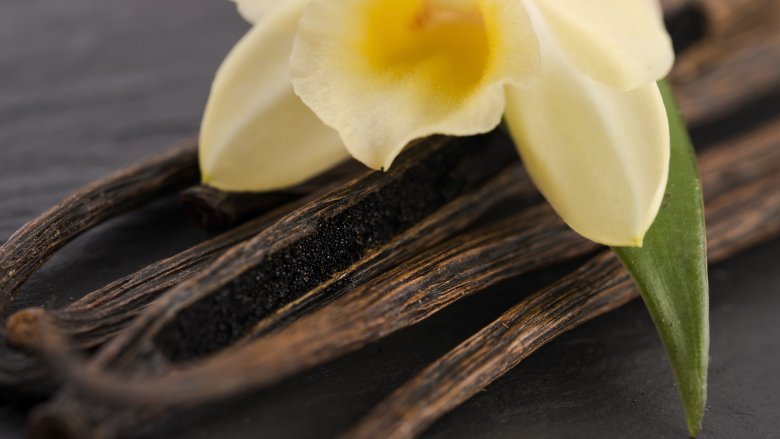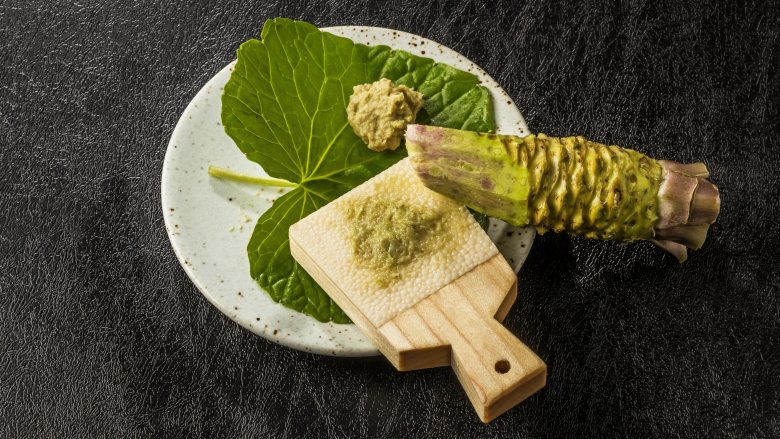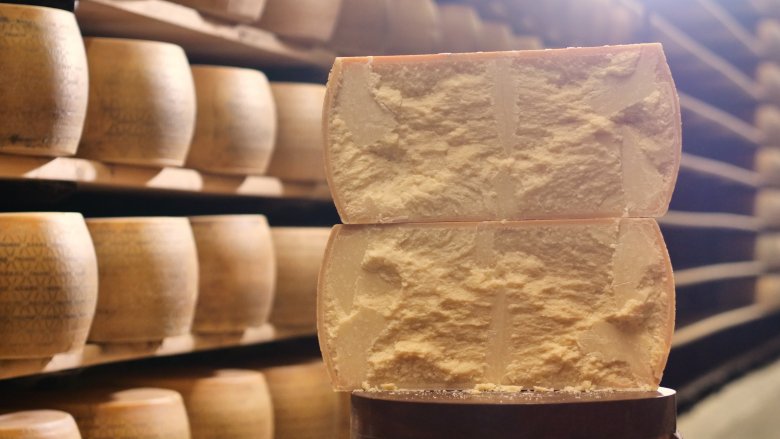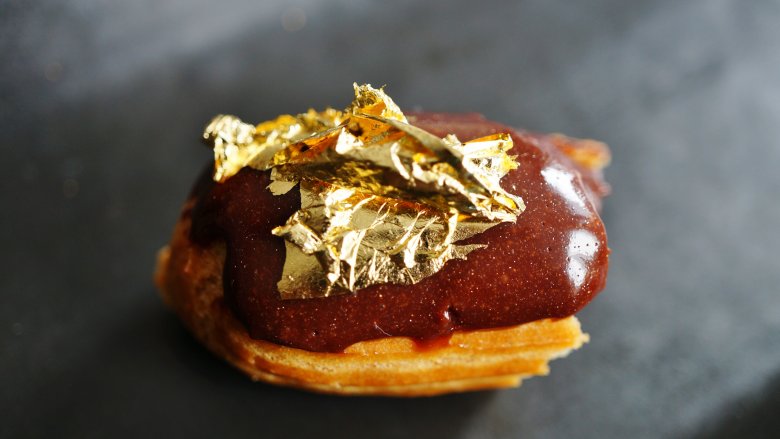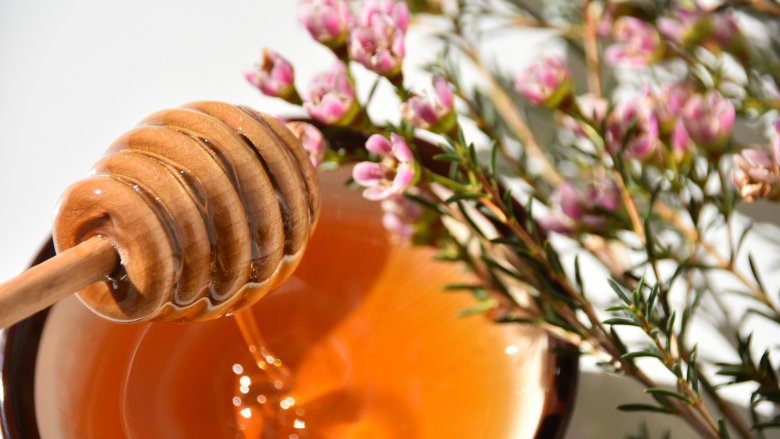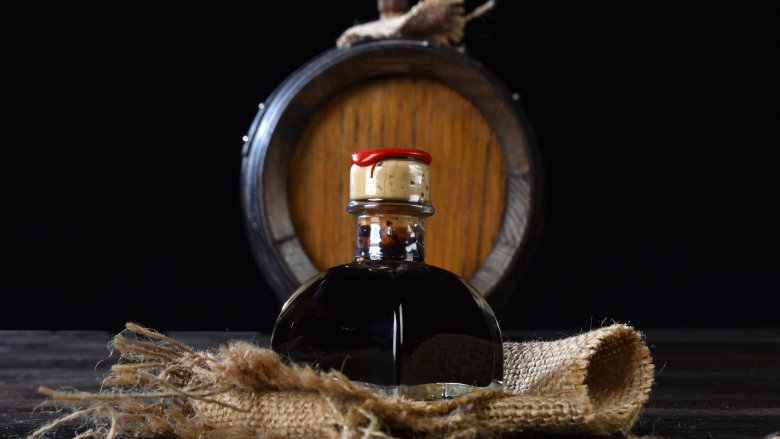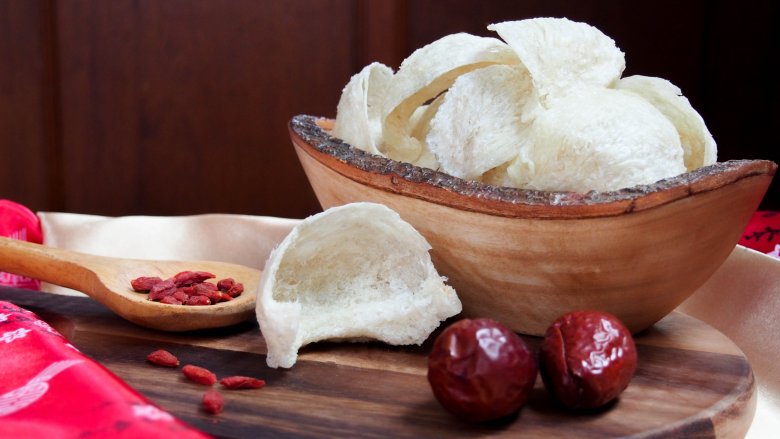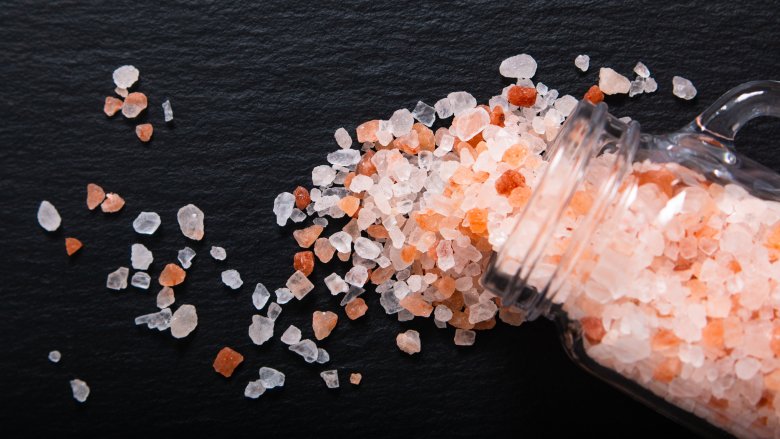The Real Reason These Expensive Ingredients Cost So Much
So, you're getting ready to make an extra-special meal for an extra-special occasion, only to find out that it's going to take one or more really expensive ingredients. What's up with that? It's strange, too, some of the things that are so, so very pricey. Seriously, it's just vinegar, right? And that bottle of honey? What's going on?
Sometimes, there's a very good reason for the price of some of the ingredients you'll find at a specialty grocer. Sometimes, those high dollar items are right on the shelves of your ordinary, everyday, favorite grocery store. But if you don't know the story behind the price tag, it can be tough to judge whether or not it's worth spending the extra money... or just picking up some regular — and more affordable — alternatives.
So let's talk about some of the most expensive ingredients you might pick up at the store, and why they're priced that way. We'll leave it to you to decide whether or not the cost is worth it.
Saffron is so expensive it's often faked
According to Business Insider, a single pound of saffron can set you back as much as $5,000. True, a little bit goes a long way, but what gives?
Part of the reason is that saffron is harvested by hand. It's essentially the stigma — the female part — of a saffron crocus, and each flower only has three of those little red tendrils. They need to be separated by workers, then dried.
The entire process is incredibly complicated. It takes around 170,000 flowers to make that $5,000 pound of saffron, and an acre of crocus fields will only yield four pounds. They only bloom from late September to the early days of December, and everything from humidity to sunlight can damage the delicate flowers. They're so delicate, in fact, that they need to be picked by hand, and only in the morning, before that damaging sunlight.
No other spice will give you the same taste and color that saffron does, but everything from turmeric to the stigma of lilies have been sold as saffron. They're not even close, though, and scientific research suggests it might become even more valuable. Evidence suggests it might help in the treatment of conditions like Alzheimer's, making this — potentially — valuable as more than just an expensive ingredient in your favorite paella.
Truffles are as expensive as diamonds
Francesca Sparvoli, one of the owners of the truffle distribution company Done 4NY, described them as "the diamonds of gastronomy," and they certainly are as expensive as diamonds. Or a Mercedes Benz S-Class, which has roughly the same price tag as a pair of white Alba truffles sold in 2018. (That's around $85,000, for anyone not up on their luxury cars.)
There are a few different kinds of truffles, and according to CNBC, it's the Alba — or white — truffles that are worth nearly the same as our Mercedes Benz. Why on earth would the market demand such a price for these clumps of fungus?
For a few reasons. Not only are they rare, but it's next to impossible to create the conditions they need to grow and farm them on any commercial scale. They're hard to find — with most of the truffle hunters using specially trained dogs to help them — and each hunter only typically finding a few ounces' worth of truffle. They're vulnerable to the weather, only grow from October to December, and immediately after they've been picked, they begin losing weight and mass — up to 5 percent per day. It takes thousands and thousands of truffle hunters to supply those truffle shavings that finally make it to your plate, and that's a lot of work for a little reward.
Matsutake mushrooms are an ingredient with a long history
The price of matsutake mushrooms fluctuates, and it's all based on how good that year's harvest is. According to the Michelin Guide, 2017 was a bad year, and prices hit $459 a kilo (that's about 2 pounds). There are different species that come from different places, but the ones we're talking about are the most prized: the ones that grow in the roots of the red pine.
There are a few reasons they're so pricey, and part of it has to do with a short growing season. They're only harvested in September and October, and they have to be picked before they've completely opened their caps. It's difficult to grow them in commercial settings, and that brings us to another problem: their natural habitats are disappearing, and they're becoming more and more scarce.
And that's a shame, because according to The Japan Times, the matsutake has been a part of the country's culinary traditions for a long, long time. Statues of the mushroom dating back between 13,500 and 3,000 years have been discovered in ancient ruins, and given that the mushroom is so delicate it will lose that distinctive, prized smell during transport, the price gets driven up for those produced near the place they'll be eaten.
Abalone looks gross, but it's still insanely expensive
Whether they're in a stir fry or just plain fried, the foodie world loves abalone. They love it so much that they're willing to pay for it — up to $500 per kilo (about two pounds), according to Azure Azure, and that's including the shell — which can weigh a lot. But why? It's found all over the world, after all, and, well... it's essentially a sea snail. And snails are gross. But here's the thing: abalone is delicious, it's just really hard to come by.
Harvesting abalone is a lot of work. They tend to live in the narrowest of nooks and crannies in the seafront rocks, and they're the same color as the rocks and algae they're surrounded by. The shell of the abalone is tough, and it attaches so firmly to the rock face that it takes some serious skill and time to get it off without destroying it.
There's some good news — farmed abalone is on the rise, says Food Republic, but abalone-lovers say they're still not quite as good as the wild ones. Each abalone takes about three years to mature, and it's only when they reach between a third and a half pound, they're harvested and shipped off to their final destination: a plate.
Hop shoots are the most expensive waste product you'll find
Hop shoots? Surprisingly, yes. Hop shoots are exactly what they sound like: they're the shoots of the hop plants, and they're also a part of the plant that isn't used in brewing. According to The Guardian, a kilo will get you back about $1,200 — in Belgium and Holland, at least, where brewers and chefs have found a use for these otherwise useless parts of the plant.
The popularity of hop shoots is spreading, and it's no wonder: they're being taken from waste product to the plate. So why are they so expensive if they're essentially a brewing byproduct? Because they're a pain to harvest. They're tiny — plan on picking hundreds to fill a bag for dinner — and you'll have to hunt through the hops to find them. It's back-breaking, but those who have tried cooking with them say they're amazing and sort of like a nutty kale-Choi Sim hybrid. Just don't eat them raw. Then, they're described as part nettle, part hedge, and that definitely doesn't sound like it should be worth $1,200 a kilo. But who knows — with growing awareness of minimizing food waste, maybe they'll be the next big thing.
Vanilla beans are getting more expensive by the day
In 2018, Business Insider was reporting that the price of real vanilla was skyrocketing, and it had become more valuable by weight than silver.
A huge part of the value of vanilla comes from the fact that it's difficult to grow. Vines can take up to four years to mature, and once they start producing flowers, those flowers only bloom for one day each year. That's also the only day they can be pollinated, making vanilla farming incredibly labor-intensive, especially in areas where deforestation has destroyed vanilla's natural habitats — specifically, in Mexico. Vanilla grown outside of that habitat — and most is — gets no help from native pollinators, and has to be tended by hand.
Vanilla crops are also susceptible to two things that help drive the price up even more: theft and extreme weather. Climate change is increasing the storms that have been ravaging the area where most vanilla is grown — Madagascar — making it likely that the price will just keep going up.
Real wasabi is so expensive, you've probably never really tried it
You might be able to pick up wasabi pretty cheap, but that's not real wasabi. Chances are pretty good that it's just horseradish with some coloring or — if you're lucky — a little bit of the real thing mixed in. Get the real stuff, and the price is going to jump about 25 times what you think you should be paying.
That's because it's incredibly hard to grow. According to Business Insider, wasabi has a very specific set of conditions it needs to thrive, including the presence of running water, shade, rocky soil, and a specific temperature, humidity level, and mineral content. It's also incredibly susceptible to pests, and the only real natural habitat it's found in is alongside streams in the mountains of Japan.
The difficulty in growing wasabi is well known among farmers, and it's also helped prevent anyone from making the effort to grow it on a commercial scale. According to the BBC, the few wasabi farms in Canada have opened at a cost of around $700,000 per acre, and given that it takes an entire year for the plant to mature — if nothing goes wrong — it's an investment that makes it likely you're going to keep using that colored horseradish... or paying a lot for the real deal.
Real Parmesan cheese is made with only three ingredients, but it's still really expensive
Here's one that comes with a caveat — we're talking about real Parmesan cheese here, not the stuff that comes from Kraft. According to Forbes, that stuff contains ingredients that are completely illegal in the production of the real stuff, and now you know. (You should also know that at the Parmigiano-Reggiano museum in Italy, there's a whole exhibit on imitation Parmesan from around the world.)
The real stuff, says Business Insider, comes in wheels that weigh around 88 pounds, can cost over $1,000 each, and are part of a $2.5 billion industry.
That's partially because authentic Parmesan only comes from a single region in northern Italy, and it originally came from a city aptly named Parma. There are only three ingredients in the real stuff: milk that comes from the same region and goes from cow to cheese in less than 20 hours, an enzyme called rennet, and salt. That's it, but part of that cost comes from the fact that it takes a lot of milk to make one wheel of cheese. We're talking about 131 gallons, and once it's made, it needs to age for at least a year before it's sold. It might be labor-intensive, but it's worth it.
Edible gold is a real ingredient, and it's as expensive as you would expect
While it might seem like the trend of fancying up food with sheets of gold leaf is something that came from the popularity of Instagram and social media, Food & Wine says this expensive ingredients has been used for centuries to make food, well, just prettier. And it costs just as much as you would expect: Slate says most edible gold costs somewhere between $120 and $160 per gram, and to be clear, we're talking about 24-carat gold here.
Edible gold costs so much simply because the best stuff — the stuff that's fine for you to eat — should really be at least 90 percent real gold, with the remaining part being another pure, safe, and inert metal (like silver). In order to be completely safe for consumption, it needs to be pure enough — and inert enough — that it's just going to pass through you, and not all "gold" will do that. The gold in, say, a wedding ring isn't the same thing, and you definitely shouldn't eat it as it could contain other metals that can be toxic. So... is it worth it for a little dazzle on your dessert?
Manuka honey is 100 times more expensive than regular honey
If you've ever been fortunate enough to have Manuka honey, you know what the big deal is. It's richer than most honey and has an unmistakable, earthy taste, and it costs about 100 times more than regular honey.
That, says Business Insider, is because true Manuka honey originates from the nectar of a wild flower in New Zealand. It's called the Leptospermum scoparium — or Manuka — and that flower is so remote that anyone who wants to find some might have to invest in a helicopter — and it's only open for 12 days a year.
And sure, it's tasty, but according to the BBC, part of the value of this particular honey also comes from its medicinal qualities. Manuka honey contains something called methylglyoxal, which has scientifically confirmed antimicrobial properties. That means it's often sold as extra healthy, and we all know the price tag goes up on something when it's linked to health benefits. But here's the thing — we still haven't figured out just how effective it is, and we still don't know whether or not this compound survives being eaten. The science is still out on this one!
Aged Balsamic Vinegar di Modena is an expensive legacy
Aged Balsamic Vinegar di Modena isn't just vinegar, it's crazily expensive vinegar. A 100ml bottle will set you back almost $300, and when you open that bottle? Well, you have some balsamic vinegar.
But according to Italy Magazine, it's worth every penny. This not-at-all-bitter balsamic from Modena is part of their culinary legacy, and it's been produced by some of the same families for generations. The best were being made as far back as the 11th century, and bottles were once exchanged by aristocrats, passed down through wills and estates, and accepted as a part of dowries.
And it takes a long, long time to make. It's typically aged for anywhere from 10 to 50 years, and look at it this way: a vinegar-maker who grows the grapes, harvests them, boils them, and lays all the groundwork is relying on their heirs to finish making that batch — and it's no simple task. Once the grapes are boiled and casked, they're moved into different casks every year. The different woods, temperatures, and conditions makes the taste unique to the family producing it, as everyone has their own secret recipes and methods. It's truly artisanal, and only around 20,000 bottles are produced every year. That's a literal drop in the bucket when compared to the cheap stuff — Italy exports about 30 million of those bottles in the same amount of time.
Swiftlet nests aren't used as an ingredient for their taste
In 2019, Business Insider took a closer look at an ancient and traditional ingredient in Chinese cuisine, such as bird's nest soup. It was the nest of the swiftlet, a little Asian bird who builds three nests a year using saliva to stick it onto the walls of cliffs and caves. At the time, a few dozen nests were selling in New York City for more than $1,000.
There are a few reasons they're such as expensive ingredient, and they don't have much to do with taste. The first reason is that they've been long prized for alleged medicinal properties, which include everything from making children taller, to having anti-inflammatory effects, and even curing cancer.
They're also hard to harvest, as the birds tend to build their nests high up sheer rock faces. Most of the nests came from wild birds, and when demand skyrocketed — particularly in the 1990s — so did the harvests. In order to keep up with demand, nests were harvested before the birds were finished with them, and that led to a massive decline in swiftlet population: around an 88 percent decline in some areas, which made the nests even more rare and more valuable.
Today, the demand is still out there, and it's satisfied — in part — by so-called swiftlet hotels. Vacant buildings and floors have been opened to swiftlets, and now — once their eggs have hatched and the nests are vacant — they're harvested for soup. While supply has increased, demand has, too, and that's kept prices high.
Pink Himalayan salt is much more expensive than table salt
It's pretty, it's pink, it's trendy, and if you want to add it to your meals, you'll find out quick that it can cost up to 20 times as much as regular, boring old table salt. It's pink Himalayan salt and yes, it's the same thing they make those funky lamps out of.
There's a few things at work here that's going to raise the price of this expensive ingredient, and it all starts with popularity. Not only is it allegedly healthier than regular salt, but it's rumored to help treat things like insomnia and respiratory diseases. While there's no real scientific evidence any of that is true, we can say that it's purer than most salt. It's harvested from mines in Pakistan and taken from underground sea beds that crystallized between 500 million and 200 million years ago. They've been protected from modern-day pollution, and since the crystallized lakes are mined by hand, it's nowhere near as processed as some other types of salt. There's also a lot more work that goes into getting our hands on it.
And people are willing to pay for all-natural salt, but really, that's just part of the story. The perfect storm of all-natural and trendy came together to make this one popular and pricey, so part of you're paying for with this is the fact that it's pretty — so it looks really good in pictures.
